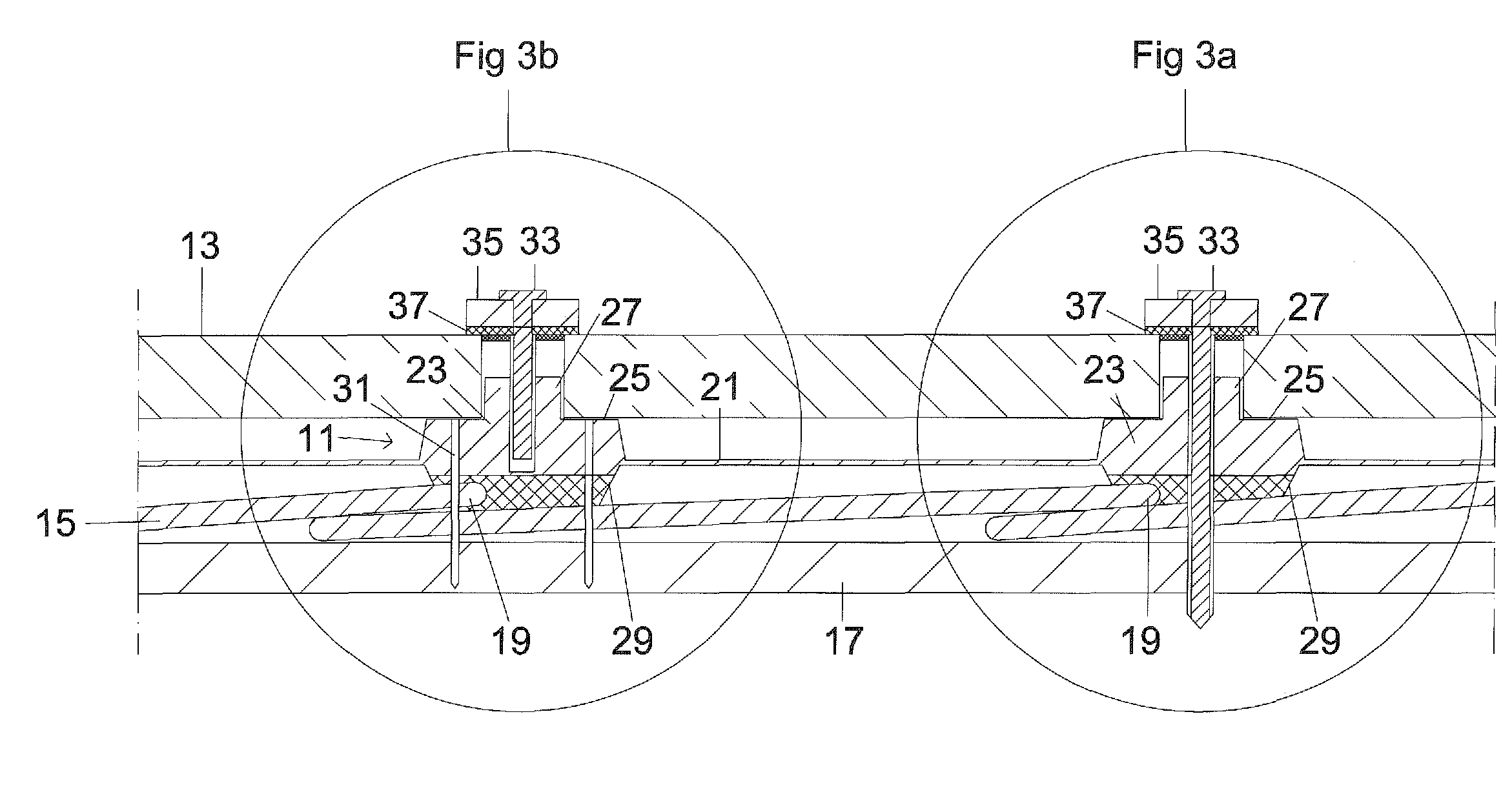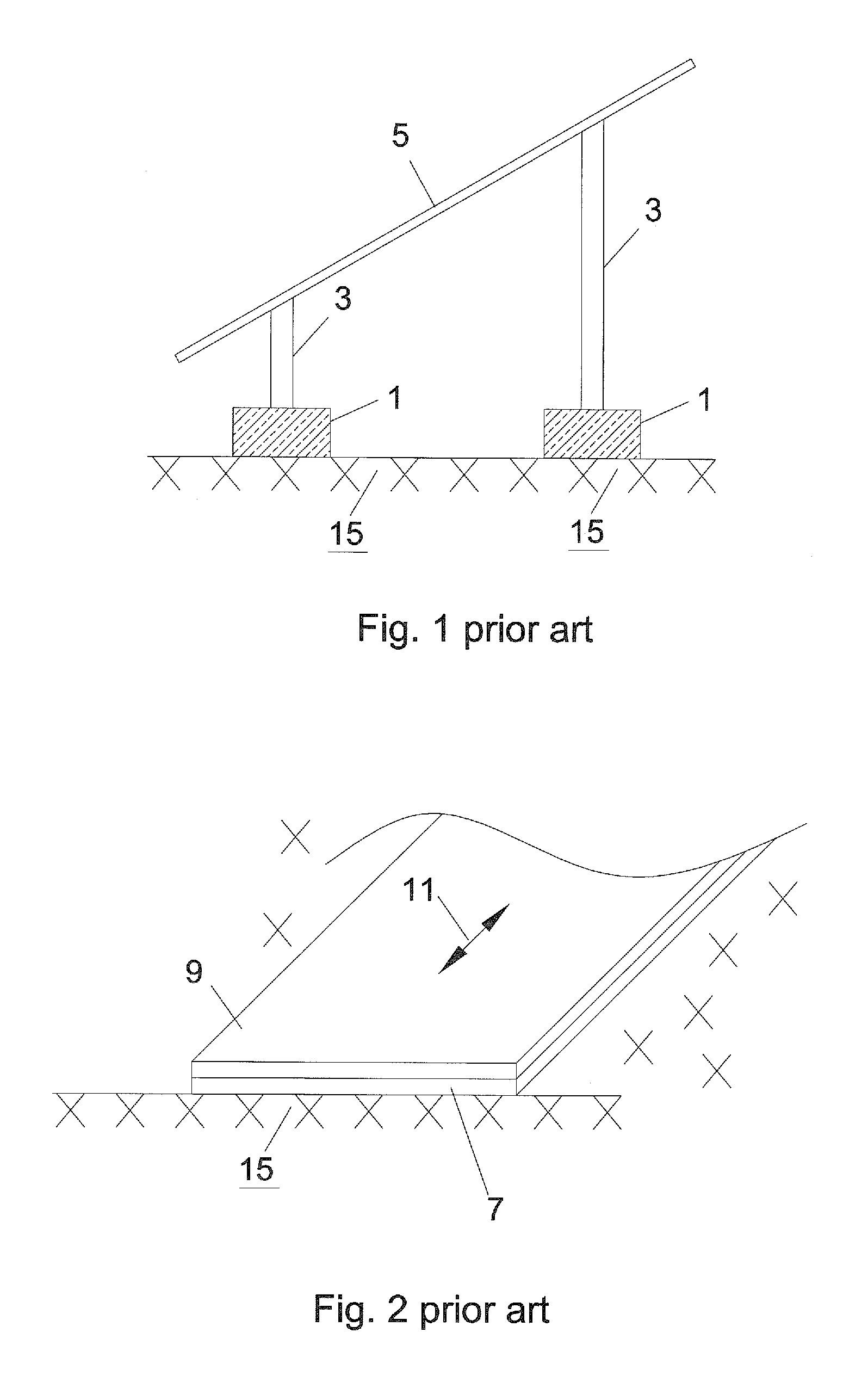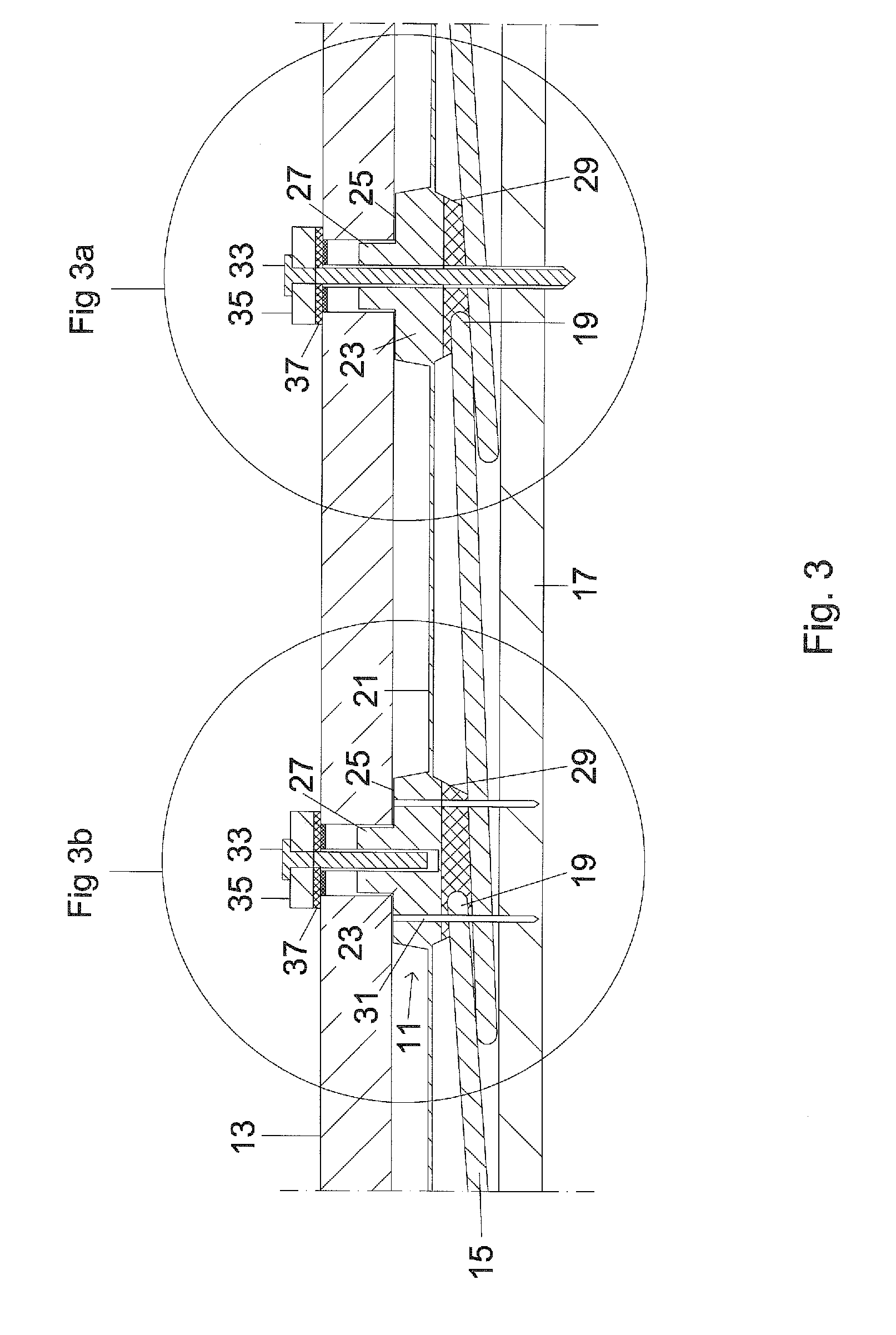Roof mounting support for photovoltaic modules on uneven roofs
a technology for photovoltaic modules and roofs, applied in photovoltaics, heat collector mounting/support, sustainable buildings, etc., can solve problems such as sealing damage to roof panels
- Summary
- Abstract
- Description
- Claims
- Application Information
AI Technical Summary
Benefits of technology
Problems solved by technology
Method used
Image
Examples
Embodiment Construction
[0034]Throughout all the figures, same or corresponding elements may generally be indicated by same reference numerals. These depicted embodiments are to be understood as illustrative of the invention and not as limiting in any way. It should also be understood that the figures are not necessarily to scale and that the embodiments are sometimes illustrated by graphic symbols, phantom lines, diagrammatic representations and fragmentary views. In certain instances, details which are not necessary for an understanding of the present invention or which render other details difficult to perceive may have been omitted.
[0035]Turning now to the drawing, and in particular to FIGS. 3, 3a and 3b, there is shown with the reference symbol 11a mounting support for mounting rigid photovoltaic modules 13 on an uneven roof panel. The roof panel is composed of a plurality of shingles 15 which are nailed in overlapping relationship onto a wooden substructure 17, typically with roofing nails (not shown...
PUM
 Login to View More
Login to View More Abstract
Description
Claims
Application Information
 Login to View More
Login to View More - R&D
- Intellectual Property
- Life Sciences
- Materials
- Tech Scout
- Unparalleled Data Quality
- Higher Quality Content
- 60% Fewer Hallucinations
Browse by: Latest US Patents, China's latest patents, Technical Efficacy Thesaurus, Application Domain, Technology Topic, Popular Technical Reports.
© 2025 PatSnap. All rights reserved.Legal|Privacy policy|Modern Slavery Act Transparency Statement|Sitemap|About US| Contact US: help@patsnap.com



